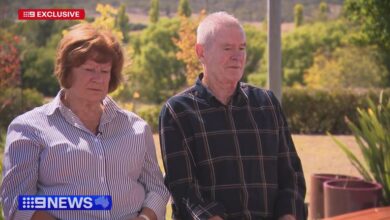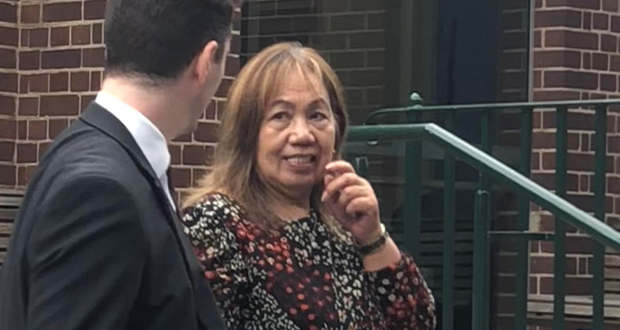Towards a workable policy for wound management
The federal government needs to look at the real cost of wound care.
The very serious problem in relation to wound management is well known – if you are elderly, have a wound and live either in the community or within a nursing home you can be expected to pay full price for your dressings which can be very expensive. This situation has resulted in disastrous patient outcomes hence the urgent need for federal health policy action.
It is imperative to look at what drives the real cost of wound care and making improvements that are sustainable in the long term in order to build a case for subsidisation of treatment based on best practice and available evidence.
According to Sussman’s Victorian College of Pharmacy report in 2003 (Monash) the average cost of healing a person’s wound within the residential aged care sector (RACS) is $1005.30 (study population = 2000 residents in RAC).
The report indicated that through improved access to expertise and dressing product utilisation that the overall cost could be reduced. Similarly the PRIME study undertaken in 2004/5 (Santamaria et al) found that a dedicated program of education, prevention strategies, improved wound management approaches and surveillance resulted in a 40 – 50 per cent drop in the number of pressure ulcers within high care facility resident populations (population = 1956 high care residents).
By combining the results of these studies we are able to establish a clear action pattern: education, access to expertise, improved approaches to management and prevention in concert with clear evidence based protocols, dressing therapy and product use results in reduced cost and improved outcomes for residents.
Improvements to wound management approaches must be implemented without considering just the expense of dressings: they must show how, within a best practice model, access to the best available treatment-related products and therapies would result in vastly improved health outcomes for the elderly person.
In this way an argument can be built that even better results would be achieved through greater access to appropriate dressings.
In order to understand the size of the problem it could be helpful to look at some economic modelling associated with wound management in residential aged care in Australia.
Numerators (wounds occurring across Residential Aged Care Services per annum)
• Skin tears: 2 per resident per year (White, Karam,Cowell 1994)
• Pressure Ulcers: 26 per cent point prevalence (Santamaria et al 2005)
• Vascular Ulcers: 1 per cent population > 65 (Cullum, 2001; Briggs, 2003)
Therefore per 100 residential aged care places (before implementation of best practice):
• Skin tears = 200
• Pressure Ulcers = 26
• Vascular ulcers = 1
Total number (per annum) for most common wounds = 227per 100 beds
• Cost to healing = $1005.30 x 227
• Total cost to healing per 100 beds = $228,203.10
• Total cost per RAC bed = $2,282
Predicted reduction in wound occurrence based on implementing best practice (2003 and 2005 reports) = 50 per cent.
Therefore per residential aged care bed potential cost saving is: $2,282 / 2 = $1141
In order to implement best practice within the RACS a per-bed cost of $200 has been calculated based on costs from previous studies. It is calculated that implementing best practice alone would result in net saving of $941 per bed, per annum. Typically then, a 100 bed RACF could save $94,100 by utilising best practice approaches.
According to latest Australian government figures a target of 88 residential care places per 1000 people aged over 70 is to be achieved in next 2 years. This would equate to approximately 166,000 residential aged care places.
Using the above estimates as a baseline figure, approximately $378 million is spent annually on wound management in residential aged care. Best practice approaches could result in a gross saving of approximately $190 million at a cost of no more than $33.2 million: a net saving of $157 million per year.
The relative cost saving per bed provides a sound economic case for the RACS to consider and shows how savings would only be enhanced by coupling access to the best therapies and dressings with the implementation of best practice.
The multi-disciplinary aspects of wound care can continue to be facilitated under the Chronic Disease Management model, Comprehensive Medical Assessments and other rural based or state funded schemes.
GP access and involvement would be facilitated by the adoption of such a model of care: it would improve outcomes for the GP’s patients, maintain the centrality of GP based care (through reporting, assessing, diagnosis and referral) and reduce the number of call outs for locums.
Dieticians and podiatrists would be integral to the implementation of best practice due to the nature of ageing and the necessity for specialised care in their respective domains. The subsidised implementation of best practice coupled with dressings and therapies would therefore result in wider access to medical and allied health care which in turn will serve to enhance treatment.
There is a vast amount of specific wound management knowledge residing within the nursing population and access to this expertise is very limited under the current Medicare funding. Wound management nurses do not have access to provider numbers which means that independent nurses must charge elderly clients for care.
Whilst this situation continues our capacity to provide best practice in nursing homes and the community is severely limited.
Perhaps the best way forward in the pursuit of better care outcomes for elderly people with wounds would be based on the following:
Federally subsidised care packages predicated on:
1. Correct diagnosis by an appropriately qualified practitioner
2. Care implemented according to evidence based protocols
3. Time limits for care package funding based on best available evidence and healing timeframes
4. Regular review of the scheme and its implementation by Govt. and peak professional bodies such as the AWMA
In this way the cost of care to the elderly person would be minimised or even free. Cost of caring for people with wounds in RACF’s would be significantly lowered allowing for some budgetary freedom but whilst also ensuring that best practice is always carried out: expense will no longer be an issue or an excuse for lamentable outcomes.
Email: [email protected]





